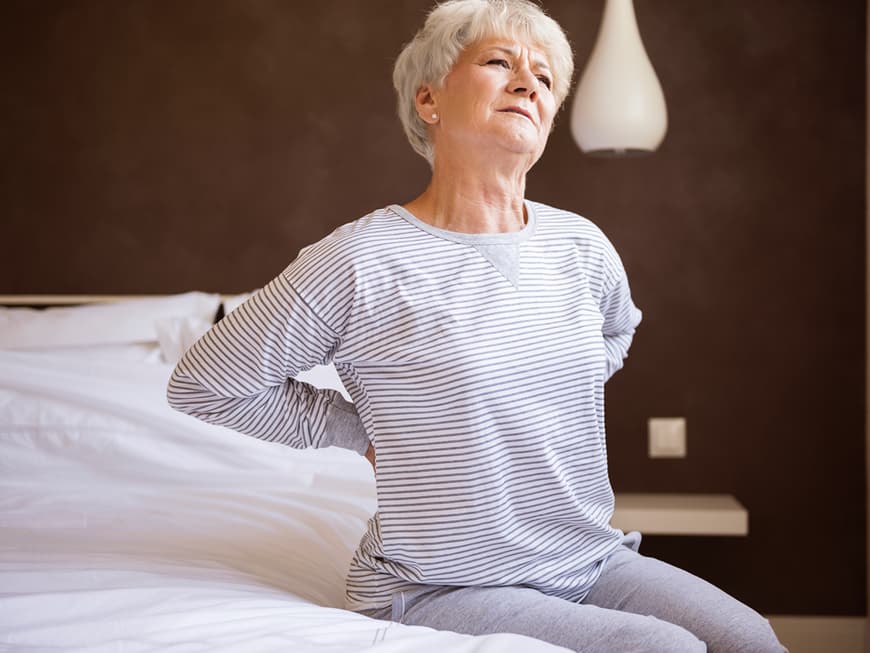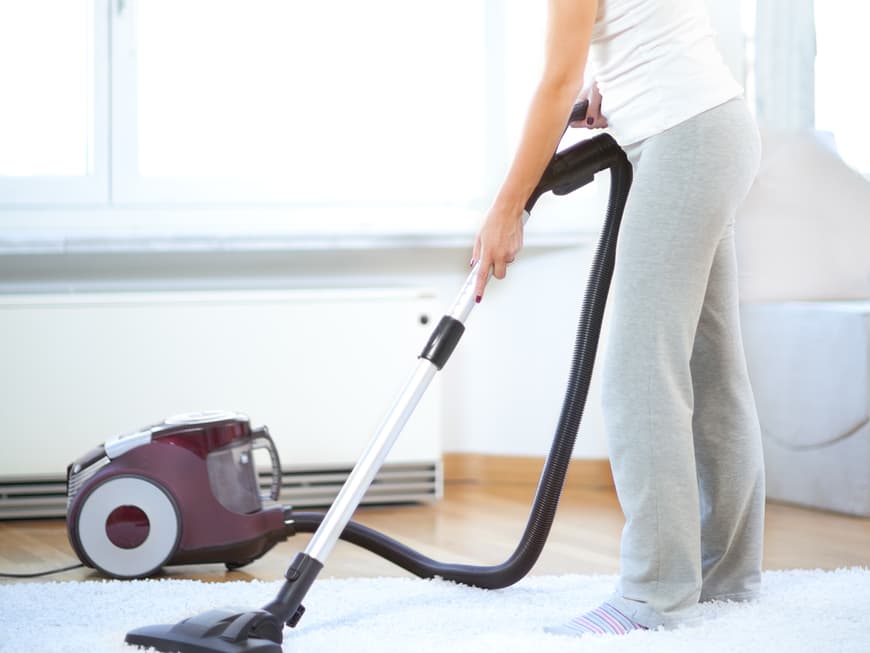Exercise for back pain
You can do the following to prevent pain from occurring in the first place or to make it disappear again soon:
Tip 1:Exercise is the be-all and end-all for back pain. Try to move as much as possible and sit as little as possible. After all, spending most of your life sitting in a chair or on the sofa exacerbates existing muscle weaknesses. You should therefore cycle, walk briskly, hike, swim, whatever suits you best. Ideally, you should be active for half an hour at least three times a week.
Tip 2: Strengthen your back, core and abdominal muscles with targeted exercises for back pain. If you don't want to exercise alone at home, you should sign up for a spinal gymnastics or Pilates course at a sports club or adult education center, for example.
The back prefers to sleep medium-hard
Tip 3:The right mattress also helps against back pain. So make the right bed. Mattresses that are too hard are no good for back pain. A study of 300 patients with chronic back pain, for example, showed that a medium-firm mattress significantly alleviates complaints.
Tip 4:Avoid high heels. If you like high heels, limit their use to the very special moments in your life. Back-friendly heels are no higher than 1.7 to 3 centimetres. Anything higher than this will force your spine into a hollow back. At some point, it's not just your feet that hurt, but also your back.
Tip 5: Drink enough! Our intervertebral discs like it moist. The buffers between the vertebrae can only be properly supplied with nutrients if you drink plenty of fluids. Therefore, drink about one glass of water per hour (approx. 2 liters per day; if you have heart or kidney problems, talk to your doctor about the right amount to drink).
Tip 6: Eat a balanced, wholesome diet with plenty of fruit and vegetables. This will provide you with all the important minerals, vitamins and trace elements that your back needs.
Tip 7: Lose weight if you are overweight. Every extra kilo is an extra burden on your back.
Maintain your posture in everyday life
Tip 8: Help your back with the right posture for everyday tasks. You should lift loads from a squatting position. It is better to carry a medium-heavy bag in each hand than a very heavy one in just one. Also look out for back-friendly appliances. Vacuum cleaners, for example, ideally have a practical suction tube extension and operating handles for both hands.
Learn a relaxation technique
Tip 9: Reduce stress as much as possible. Because: "Persistent stress leads to tension in many people, especially in the lumbar spine, shoulders and neck," explains Dr. Reinhard Schneiderhan, orthopaedic surgeon from Munich and President of the German Spine League. Anyone who is frequently exposed to stress would do well to learn a relaxation technique (the easiest to learn is progressive muscle relaxation according to Jacobson; courses are available at adult education centers, for example).
Tip 10: Use a headset if you have to talk on the phone a lot. This is because if you tilt your head to one side for a long time when talking on the phone, you overstretch the ligaments and tendons on the opposite side, which causes pain in the neck and headaches. At the same time, the pressure of the handset on the "phone side" irritates the nerves in your hand.



